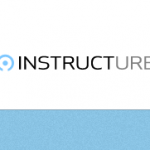 The Washington State Board for Community and Technical Colleges has just completed a exhaustive RFP process to find a replacement for Angel, their current Learning Management System (LMS) which is slated to be unsupported by 2014. The successful vendor selected was Instructure Inc., the providers of the newest LMS on the market called Canvas. This is an open source project, built on the Ruby on Rails framework. It is a vastly cleaner and simpler to use system that received high usability ratings from the faculty who participated in vendor testing over the course of the past few months.
The Washington State Board for Community and Technical Colleges has just completed a exhaustive RFP process to find a replacement for Angel, their current Learning Management System (LMS) which is slated to be unsupported by 2014. The successful vendor selected was Instructure Inc., the providers of the newest LMS on the market called Canvas. This is an open source project, built on the Ruby on Rails framework. It is a vastly cleaner and simpler to use system that received high usability ratings from the faculty who participated in vendor testing over the course of the past few months.
What is happening with the other state schools? In my conversations with colleagues across the other state four year institutions, it is clear that they are all looking carefully at this product as a replacement of their current systems that range from Moodle to Sakai, to Blackboard. The State Board is currently in contract negotiations with Instructure to agree on a contract and costs, and are allowing for the other Washington institutions to be on the contract if they choose. Everyone is watching closely to see how this all develops to potentially take advantage of the opportunity to tag on to the contract.
What does this mean for Evergreen? Since 2006, Evergreen has self hosted their own LMS (Moodle) on a bit of a shoestring. If the Instructure contract made sense and Evergreen decided to move to the new platform, it would be a big change for the institution. If Evergreen decided to participate, a vastly updated suite of built-in functionality would be available including student eportfolios, teleconferencing, improved student assessment functions and accessibility tools. Sticky problems of Moodle such as the inability to make course sites public and elegantly embedding media files (to name just two), would be resolved. This would be an enormous leap in functionality to a highly extensible tool with a modern, flexible user-interface. It would also be a change (which can be difficult) and faculty would need to be trained and brought up to speed along with their colleagues across the state. Ultimately, migrating to Canvas will come down to cost and whether the faculty and institution believed that there is value to moving away from Moodle.
Check it out for yourself.. As contract negotiations at the state level trundle along, I highly recommend that anyone interested in this topic to go to the Instructure website and create a temporary demo account. You will then be able to poke around and see what it looks like and how it works. If you do any experimentation, please send me an email or post a comment below as you develop thoughts, questions, etc.. I truly would love to hear them.


